Physical Address
304 North Cardinal St.
Dorchester Center, MA 02124
Traumatic cataracts are caused by either blunt or penetrating ocular trauma, causing varying degrees of lenticular opacity.
They can be associated with damage to adjacent structures such as the iris, the trabecular meshwork, and the zonular apparatus.
The management of a traumatic cataract includes different areas of anterior segment reconstruction, such as iris repair, zonular weakness management, and secondary intraocular lens fixation techniques.
The surgical approach to a traumatic cataract will likely involve most topics in anterior segment reconstruction. Its presentation varies widely, from a very mild and focal, clinically insignificant lenticular opacity to a complete destruction of the crystalline lens, and it can result both from blunt and open ocular trauma ( Fig. 42.1 ). It is the surgeon’s responsibility to try to anticipate all possible scenarios and to be prepared, both logistically and technically, with diverse surgical techniques.
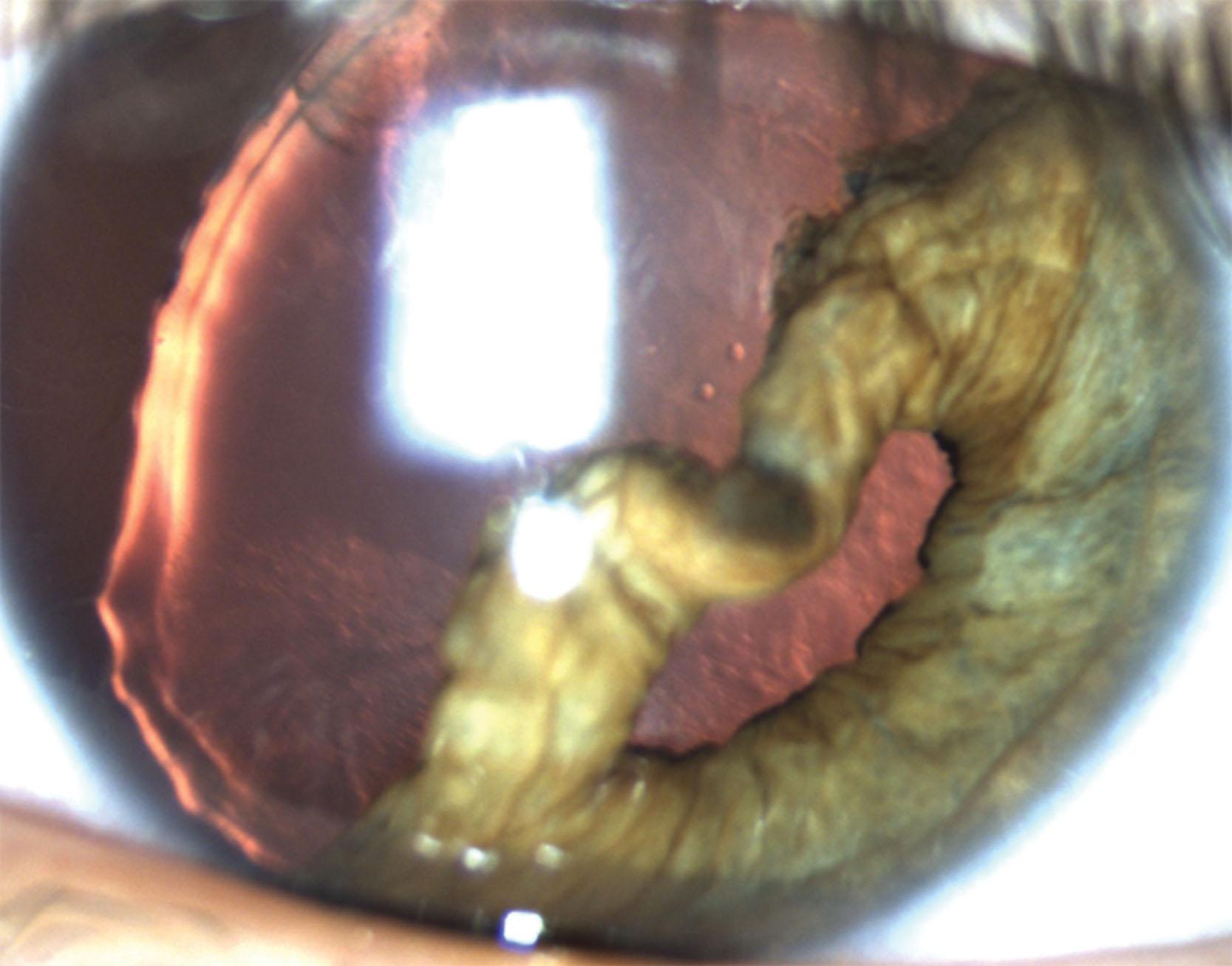
This chapter attempts to provide a complete algorithm to deal with the traumatic cataract patient, from the initial clinical exam to its surgical resolution and eventual final reconstruction.
Traumatic cataracts can be the result of diverse injuries ranging from mild blunt trauma, which can result in a focal asymptomatic lenticular opacity, to severe penetrating lesions caused by a sharp object, which can result in total destruction of the crystalline lens and surrounding structures.
Special attention is required when the mechanism of injury involves metal-on-metal activities, because a foreign intraocular object could inadvertently be missed.
Ideally, imaging is recommended to rule out this complication if any areas are hidden to examination.
The same level of attentiveness applies while dealing with pediatric cases, in which a traumatic cataract requires the ophthalmologist to at least suspect and rule out child abuse.
The initial exam includes each step of a standard cataract exam but also adds important features to search for or rule out.
The presence of vitreous in the anterior chamber is a common feature in traumatic cataract cases, and its extent will vary depending on the severity of the ocular trauma and consequent zonular damage.
Location and number of clock hours involved need to be documented.
In some cases, vitreous will not be evident during the initial clinical exam; therefore we strongly suggest “staining” it intraoperatively using diluted triamcinolone to facilitate its visualization during surgery ( Fig. 42.2 and ![]() ).
).
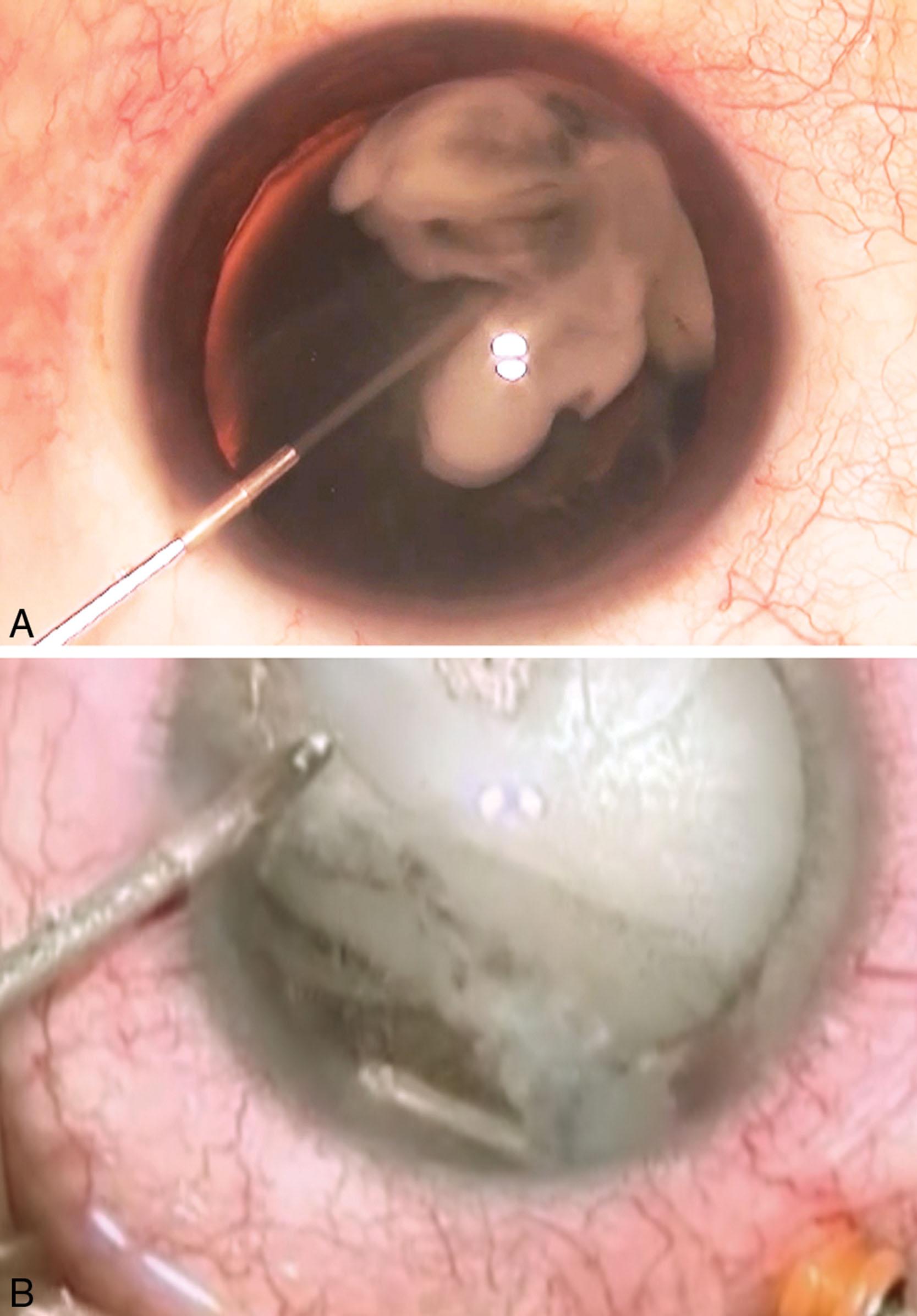
Iris damage is commonly associated with traumatic cataracts. Trauma patients should first be examined at the slit lamp before dilation to ensure that mydriasis or sphincter tear is not overlooked. Common defects can be subdivided into structural or functional.
Structural lesions can be highly variable and should be noted as to both presence and extent.
Iridodialysis
Tissue loss (focal through subtotal)
As a rule of thumb, an area of less than 3 clock hours of iris tissue loss is susceptible to primary reconstruction, depending on the “stretchability” of the tissue. Larger iris defects will require an iris prosthesis for an adequate functional and cosmetic result. This topic is covered in detail in Chapter 43 .
Functional damage can be either from pigment loss or sphincter damage (or both).
Iris pigment epithelial loss can be assessed by retroillumination ( Fig. 42.3 ).
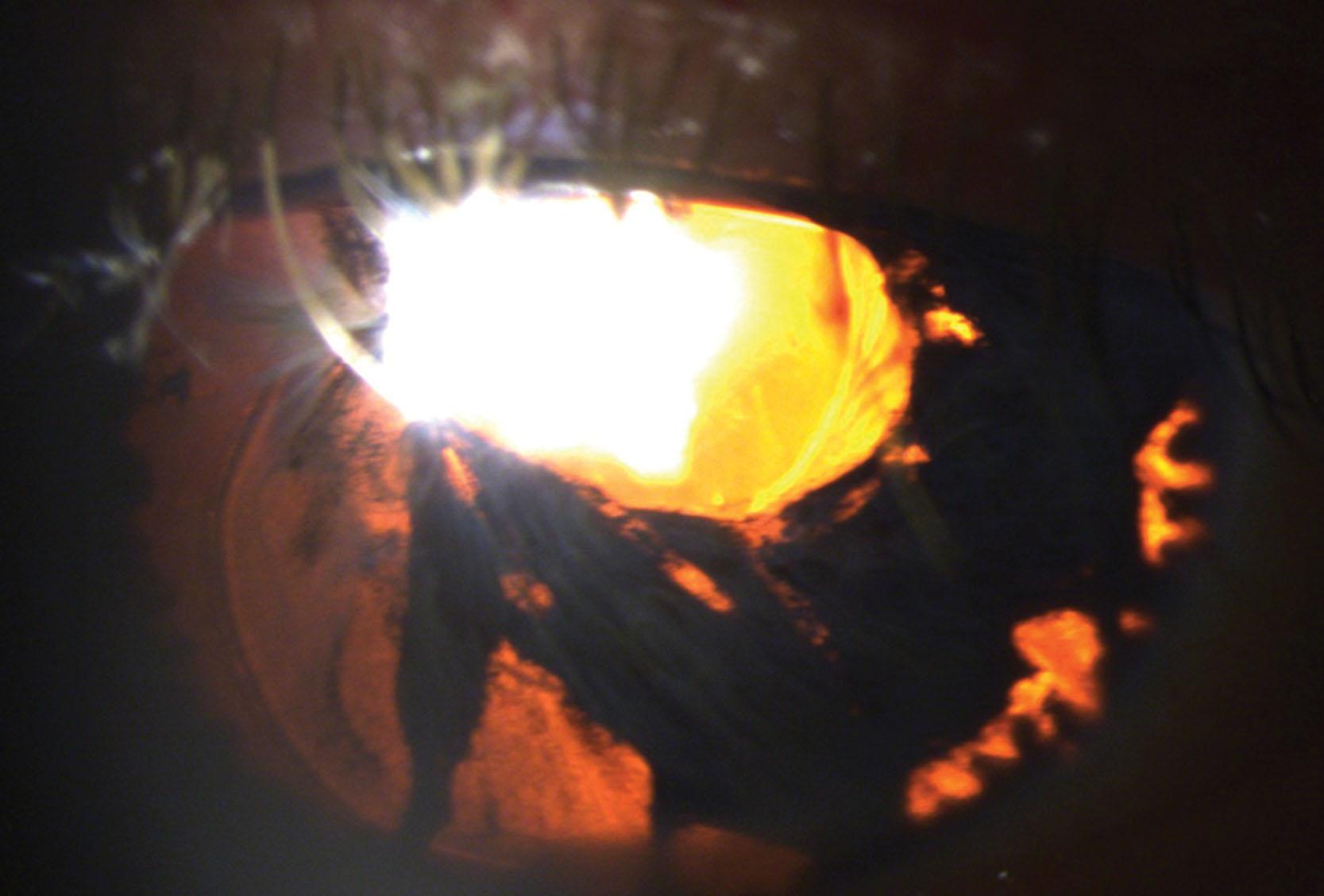
Stromal repair may restore cosmesis.
If there is inadequate iris pigment epithelium, photic symptoms are likely. In such cases, we recommend including healthy full thickness iris tissue over the translucent area of repair, including intact iris pigment epithelium.
If there is inadequate tissue to close, an iris prosthesis may be considered.
Mydriasis.
In isolated mydriasis, a cerclage suture is usually suitable.
If mydriasis is resulting from inflammatory disease, if the stroma is thinned, or if there is missing iris pigment epithelium, a prosthesis may be a better choice.
After the initial slit lamp evaluation, a full dilated slit lamp exam is imperative:
Define the extent of zonular impairment in clock hours and location.
Identify different degrees of lens phacodonesis or subluxation; however, phacodonesis is sometimes less apparent after dilation as the zonules are put on stretch.
Look for areas with evident absence of zonules, under full pupillary dilation ( Fig. 42.4 ).
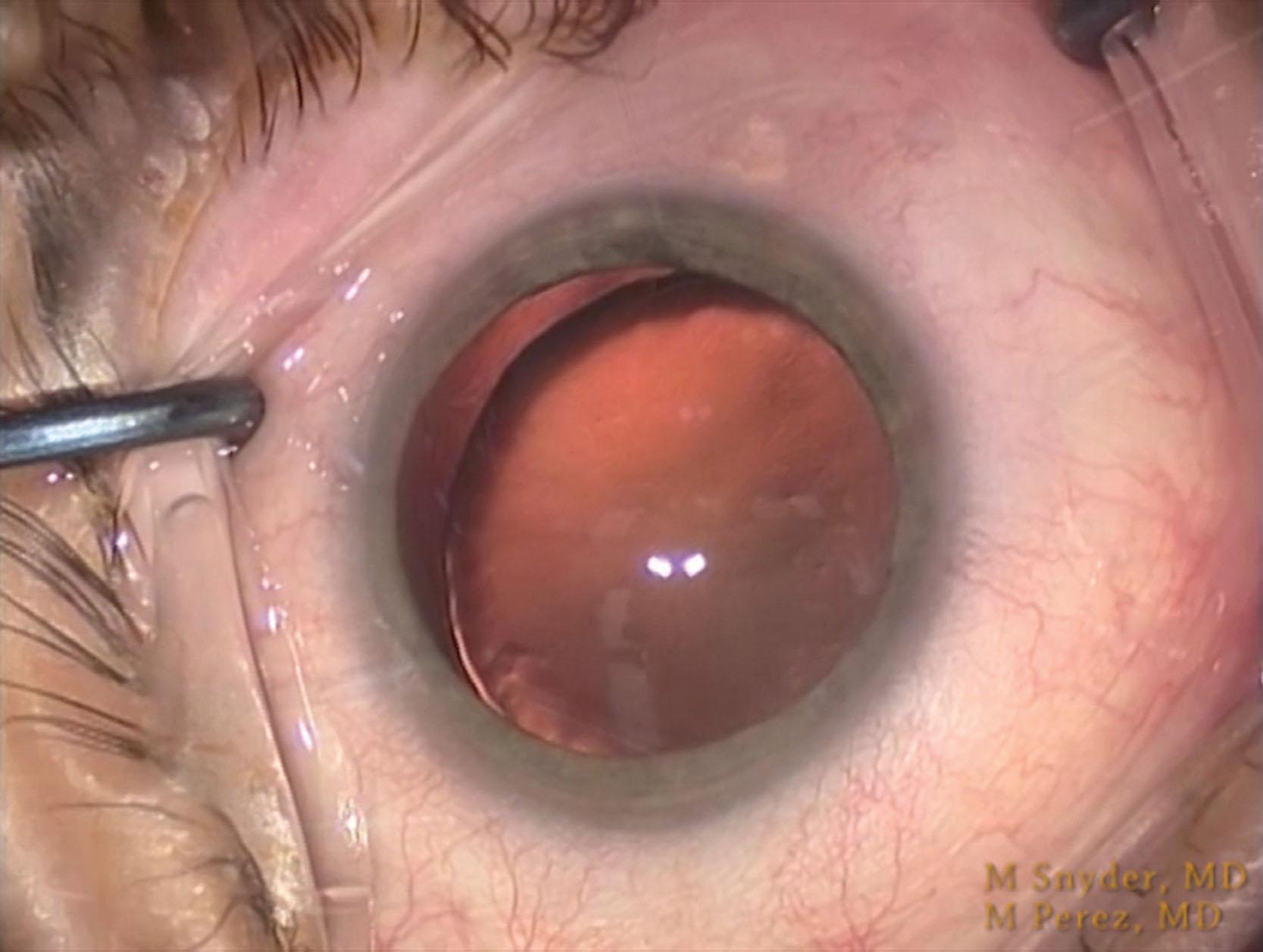
Have the patient look off to one side, then rapidly look straight to see if the lens wiggles.
Another technique is to gently tap the globe through the lid from the side with your index finger.
Identify any:
Displacement of the lens?
Misshapen geometry?
The extent of zonular damage will determine which intraocular devices will most likely be required during surgery and will allow proper planning to ensure that the proper supplies are available in the OR. Use of devices is covered in the later section on surgical execution.
Usually, with less than 3 hours of predicted zonular weakness, a standard capsular tension ring should be able to maintain long-term capsular bag stability.
A device that can be sclerally fixated is likely advisable if:
There are more than 3 hours of zonular impairment.
There is lens displacement.
D Options include:
“Cionni ring,” also called a Modified CTR or MCTR. (Morcher GMBH, Stuttgart, Germany)
Capsular tension segment (or segments), commonly known as “Ahmed segment,” [Morcher GMBH]) ( Fig. 42.5 ).
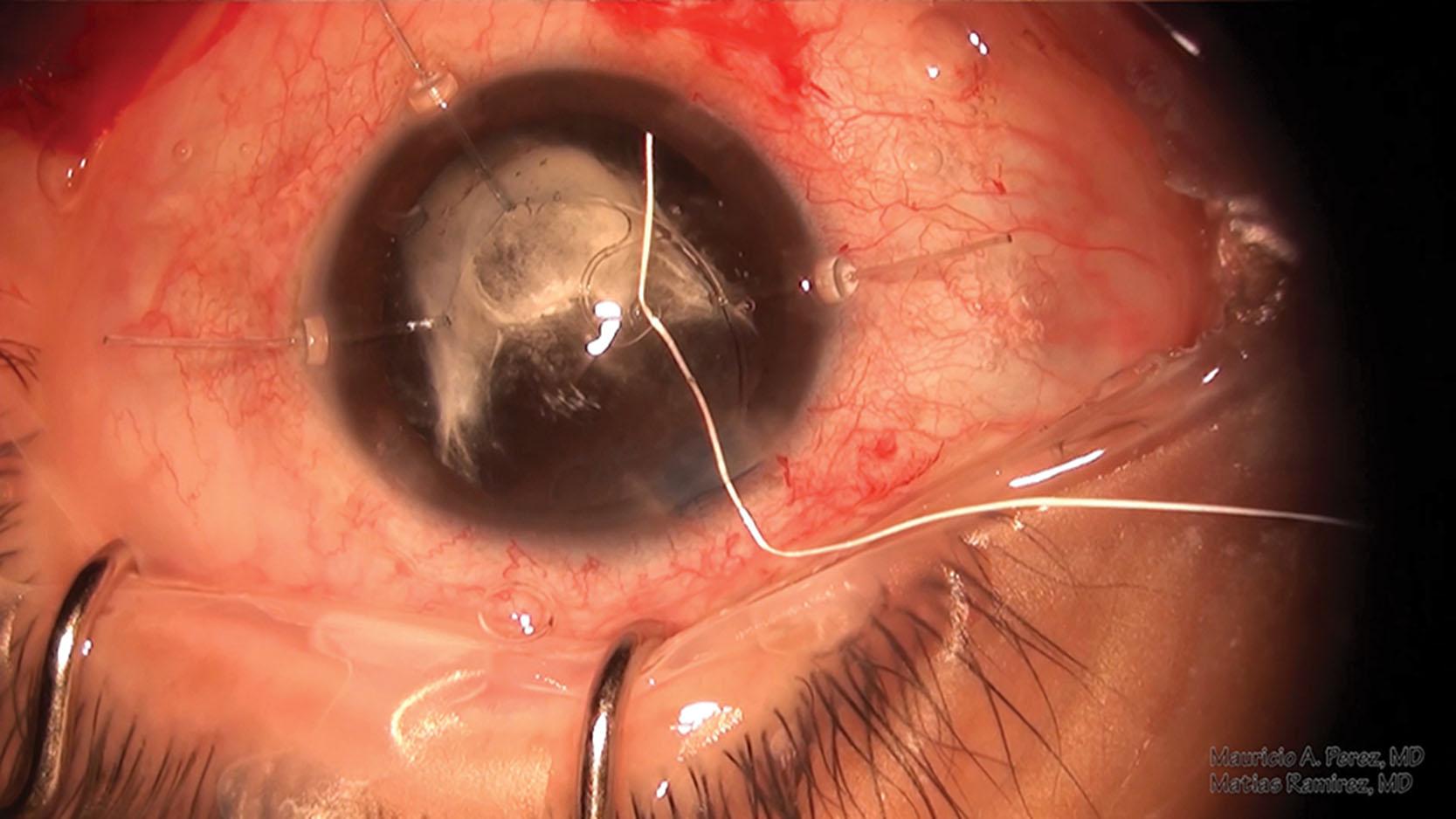
AssiAnchor (Hanita Lenses, Kibutz Hanita, Israel) are also available outside the United States. An advantage of the AssiAnchor is that its fixation element is centrifugal to the peripheral capsule, so it does not induce torque, as occurs with an Ahmed segment, with the occasional very frustrating rotation of the segment out of the bag when the suture is tightened against fibrotic countertraction 180 degrees away. See Chapter 34 for more information and a video.
Suture material: For scleral fixation, for years, 10-0 polypropylene suture filled that role in anterior segment reconstruction, but its life span was limited to roughly 10 years on average . Lately, expanded polytetrafluoroethylene (ePTFE) or CV-8 Gore-tex (Gore Medical, Newark, DE, USA) has surged as the leading (off-label) alternative because of its long-term fixation capabilities and decreased likelihood of intraoperative breakage during surgical manipulation.
Temporary disposable capsule hooks and iris hooks should be readily available in the operating room whenever zonulopathy cases are planned.
Become a Clinical Tree membership for Full access and enjoy Unlimited articles
If you are a member. Log in here